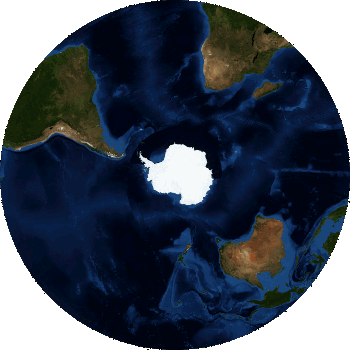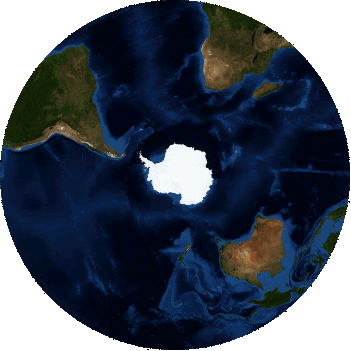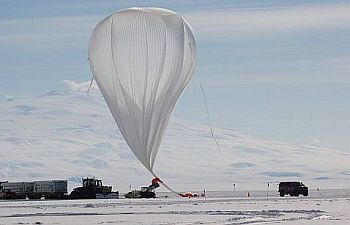News Archive
-
December, 18 2016
NASA have
fivefour balloons above AntarcticaMcMurdo Station, Antarctica.- "Back in home by christmas" is probably the most unreachable and distant wish anyone can have when participating of a NASA balloon launch campaign in the white continent. However, a mix of cooperative weather, hard work and right decisions, will make it happen for the launch crew of the Columbia Scientific Balloon Facility (CSBF) in charge of the operations in the ice.
BACCUS

ANITA-4

ANITA Hi-Cal A & B (terminated)

STO-2

To launch scientific balloons it's a job like any other, but it is not easy to go back there with fresh memories in mind from just a year ago: a weather that was so capricious, a campaign that lasted more than two and a half months, only a successful launch performed after almost seven attempts (GRIPS), and one of the instruments that could not get a good launch opportunity (STO2) before launch window closes, having to wait in a deposit in McMurdo for the rest of the year to try to have better luck this summer.
With all that in mind, I can imagine the general mood on the base, taking account that by mid-December, there are five balloons aloft -three of them the largest ones available and with really complex loads onboard- circulating the Antarctic stratosphere.
At right we can see the real time tracking of each mission, taken directly from CSBF nasa server. The parth of the route marked in red is the current revolution each balloon is performing around the pole and in blue is the previous revolution.
But better, let's briefly recap the events of the last days.
STO-2 and ANITA's calibration launches
The last launches of the campaign were performed four days apart.
On December 8, was the turn of STO-2 (Stratospheric Terahertz Observatory - II) a NASA-funded long duration balloon experiment designed to address a key problem in modern astrophysics: understanding the life cycle of star-forming molecular clouds in our Milky Way Galaxy. The reason to send such an experiment in a balloon instead of to space, besides costs and development times, is that at the stratospheric heights on which STO-2 will operate there is hardly any water vapor which can block the far-infrared radiation (also called the terahertz radiation) coming from space.
The instrument uses the same telescope that Johns Hopkins University Applied Physics Laboratory (APL) has previously employed for its successful Flare Genesis Experiment back in the 1990's decade. Same occurs with the gondola inherited from the APL which was originaly used for the Flare Genesis and Solar Bolometric Imager balloon programs. The main detector installed on the focal plane of the telescope is a high spectral resolution heterodyne receiver system, used in the previous version of the instrument (STO-1 flown in 2012) but upgraded for extended cryogenic lifetime, enhanced sensitivity, and greater reliability. A second detector is an uncooled, Schottky receiver.
The STO-2 program is led by the University of Arizona, and counts with an extensive list of collaborating institutions which includes Johns Hopkins University Applied Physics Lab., the NASA AMES Research Center, the Jet Propulsion Laboratory, Oberlin College, the University of Maryland and the Delft Space Institute from Netherlands, to name a few.
The balloon was launched in almost perfect conditions from the Long Duration Balloon camp in Williams Field Airport, at 20:53 on December 8th according to UTC time. After a nominal climb phase to float altitude it reached it's maximum height at 1 AM December 9th. Althought there were some altitude drops larger than usual during the initial days of the flight, the balloon recovered well and by the moment of writing this, it was aloft for nine days moving in an anticyclonic path around the pole.
STO-2 was victim last year of an unusual uncooperative weather which forced to close the campaign whitout launching it, something that never happened before in the history of NASA balloon operations in Antarctica.
Below these lines we can see the moment of the balloon release.

On December 11 was the turn of the first of the balloons of the ANITA Hi-Cal missions. The balloon being a small sized one, was hand-released and ascended to 126.000 feet ahead of the completing of the first circumnavigation of the ANITA IV balloon. The following day, a second similar mission was launched after the ANITA IV pass.
The two balloon payloads -developed by a team of the Kansas University- are emitting pulses resembling the ones to be detected by ANITA IV (neutrinos). These signals will be used as a calibration parameter as I've explained in detail in my previous post.
Update: a few hours after I've published this, I've noticed that the second ANITA Hi-Cal flight launched on December 12, was terminated after 6 days of flight
On regard the GRIPS recovery operation, according to a tweet from December 11th by Hazel Bain the team is installed in the south pole station, and the Twin Otter plane to be used in the trip already arrived there. They were waiting for good weather to make the first reconnaissance flight to the landing site. Remember that as long as the GRIPS team is able to obtain internet access while deployed, they will be informing about the ongoings of the operation via the @GRIPSballoon twitter account.
-
Share this on social media


